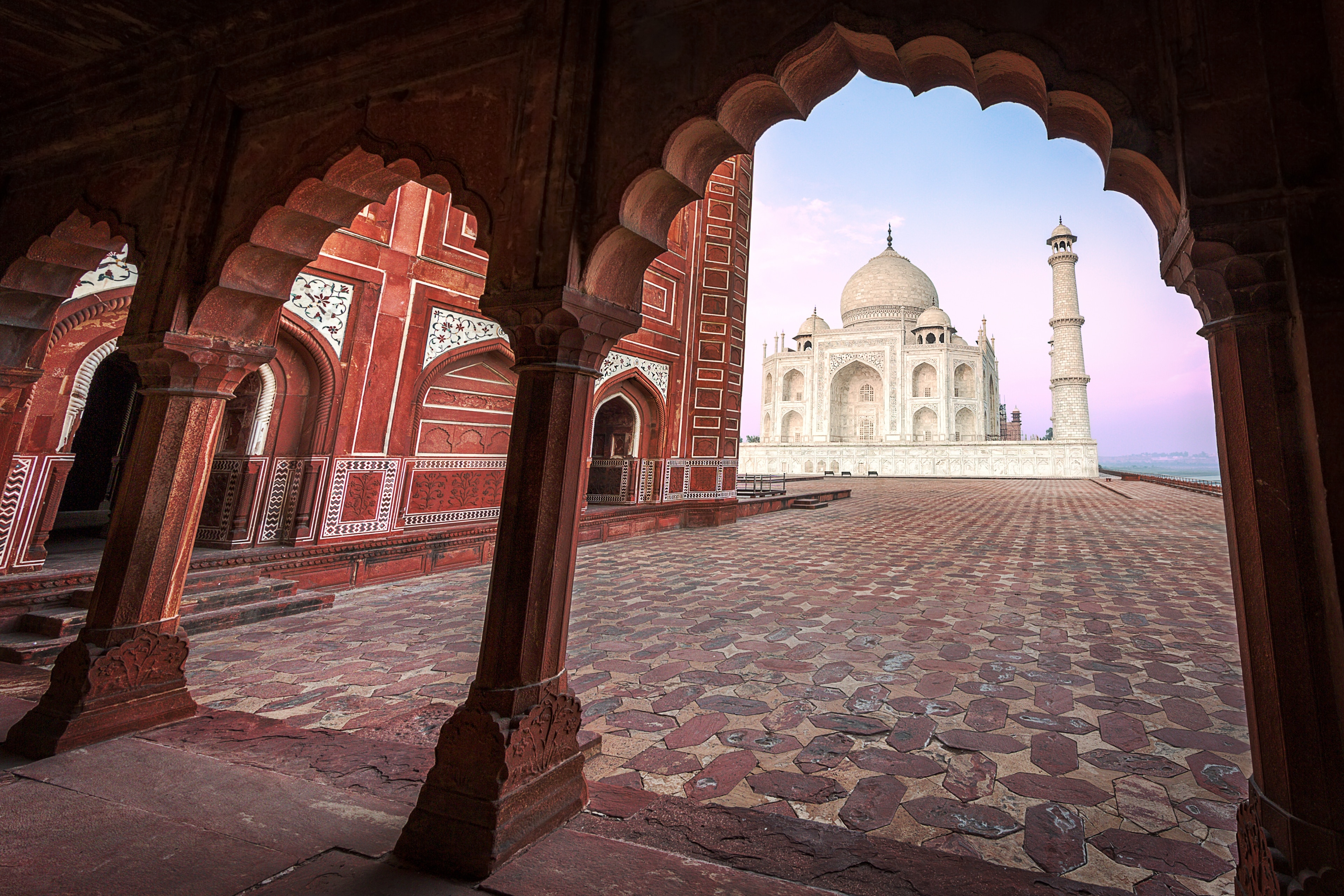1. The Architectural Marvel
A richly adorned regal gateway with impressive arches ushers you into the picturesque Taj Mahal complex, spread across an area of twenty-two acres. As you walk on, gradually the mesmerizing ivory-white marble monument comes into view. The Taj Mahal stands proudly with its large central dome, flanked by four minarets in perfect symmetry that give a three-dimensional effect to this striking edifice. Its marble exterior is adorned with intricately carved inlays, calligraphy, and decorative motifs.
The white marble mausoleum with a 35-meter-high dome is the highlight of the complex. It is surrounded by meticulously landscaped Persian-style quadrilateral gardens inspired by the gardens of Paradise described in the Quran. The pavilions and fountains with reflecting pools mirror the monument’s splendor, and the Yamuna River flowing nearby creates an idyllic ambiance that amplifies the Taj Mahal’s beauty.

2. A tragic romance
The Taj Mahal is an eternal love story immortalized in white marble and yet its majestic presence is shrouded in a sorrowful tale. It is a grand mausoleum, a palatial grave, built by a grieving emperor in memory of his queen. (In the inner chamber lie the cenotaphs of Shah Jahan and Mumtaz Mahal).
Legend has it that the Mughal Emperor Shah Jahan first spotted his future wife in the bazaar at Agra, selling silks and beads. He fell madly in love at first sight with Mumtaz and pursued her for five years before marrying her in 1612. Tragically, Mumtaz died after giving birth to their 14th child.
Shah Jahan constructed the Taj Mahal in her honor, with the help of architects and artists from all across the land. It took twenty-two years and 20,000 workmen including masons, stone cutters, inlayers, carvers, painters, calligraphers, dome builders and other artisans from India, Central Asia and Iran to complete the exquisite marble structure. Subsequently, Shah Jahan found himself stripped of his empire by his own son, imprisoned in a gilded cell with a poignant vista of the enchanting, melancholic mausoleum of his beloved Mumtaz Mahal.

3. Poetry in stone
The Taj Mahal is architecturally brilliant with exquisite craftsmanship. One of the highlights is the intricate marble inlay throughout the structure. Exquisite carvings, delicate floral and geometric patterns in marble along with the use of precious and semi-precious stones known as pietra dura is a testament to the skilled craftsmanship of the artisans. Gemstones such as jasper, agate, black onyx, lapis lazuli, amethyst, etcetera were inlaid by hand into the finest marble sourced from the quarries of Makrana. The attention to detail is evident in every aspect of this masterpiece. The Taj Mahal represents a fusion of distinct architectural styles, blending Persian elements with Islamic and Indian influences. This amalgamation of aesthetics creates a unique and captivating structure that showcases the cultural diversity and artistic heritage of the Mughal Empire. The Taj Mahal is considered to be the finest of the entire range of Indo-Islamic architecture.
4. Stunning vistas
The Taj Mahal sits on the curve of the Yamuna River. The Riverfront creates a striking reflection of the monument, particularly during sunrise and sunset.

The ever-changing sky and ominous clouds create a fitting backdrop to the Taj displaying its glory. The sky changes hues from honey-colored at dawn to cobalt blue during the day, pink brush strokes at sunset, or luminescence under a full moon to magnify Taj’s aura. During your visit, explore different viewpoints around the Taj Mahal complex to capture the best angles and perspectives of this architectural marvel. Designated areas assist you to appreciate the grandeur of the monument and capture memorable photographs. Each glance,regardless of the viewpoint, reveals its sublime grandeur and leaves a mark on those fortunate to witness its magnificence. Whether bathed in golden sunlight or the ethereal glow of the moon, the Taj Mahal radiates a timeless charm.

